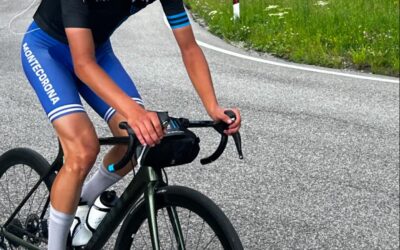Granfondos are long-distance cycling events that challenge both your endurance and mental toughness. Whether you’re aiming to finish or set a personal best, preparing adequately is key to enjoying the event and performing well. In this blog, we’ll discuss how much training you need to put in before a granfondo and how to structure your preparation to ensure you’re ready on race day.
How Much Training Do I Need to Put in Before a Granfondo?
The amount of training you need before a granfondo will depend on the event’s distance, elevation, and your current fitness level. However, a typical granfondo training plan spans several months and focuses on building endurance, power, and recovery ability. Here’s how to prepare:
- Endurance Training: Gradually increase your ride distances to build the stamina required for a long event.
- Climbing & Power Training: Include hill repeats and intervals to improve your ability to handle climbs.
- Recovery: Incorporate rest days and recovery rides to allow your body to adapt and prevent burnout.
- Specificity: Simulate the granfondo route in your training to prepare for the exact conditions you’ll face.
Endurance Training
Endurance training is the foundation of any granfondo preparation. Depending on the event’s length—typically between 100 and 200 kilometers—you’ll need to build up to completing long rides comfortably. Start by gradually increasing your long ride distances each week, aiming to peak with rides that are 75-85% of the granfondo’s total distance.
Aim for one long endurance ride per week, progressively adding more kilometers as the event approaches. For example, if your granfondo is 150 kilometers, build up to completing rides of around 120 kilometers in the weeks leading up to the event. These rides will help build your stamina and give you confidence that you can handle the granfondo’s distance.
Climbing & Power Training
Most granfondos feature significant elevation gain, so it’s essential to train for the climbs you’ll face. Incorporate hill repeats and power-based intervals into your training plan to build strength and improve your climbing ability. On hill repeat days, focus on shorter, more intense efforts up climbs to simulate the effort required during steep sections of the granfondo.
In addition to hill work, include interval training on flat or rolling terrain to build power and improve your speed. High-intensity interval training (HIIT) sessions, where you alternate between short bursts of effort and recovery, can help increase your aerobic capacity and make sustained efforts more manageable during the event.
Recovery
Rest and recovery are just as important as the training itself. Overtraining can lead to fatigue, burnout, and even injury, so be sure to schedule rest days and easy recovery rides into your plan. A good rule of thumb is to include at least one full rest day per week, and one or two days of light riding to allow your muscles to recover and rebuild.
Listening to your body is key—if you’re feeling overly fatigued or sore, don’t hesitate to take an extra rest day. Proper recovery ensures that you can continue to improve without risking setbacks from overtraining.
Specificity
The closer you can simulate the conditions of the granfondo in your training, the better prepared you’ll be. If the event features significant climbing, prioritize routes that include similar elevation profiles in your long rides. Likewise, if the granfondo will be held in hot or cold conditions, try to ride in similar weather so your body adapts to the climate.
Nutrition and hydration should also be practiced during training. Use your long rides to test out the types of food, energy gels, and drinks that you plan to use during the granfondo. This will ensure that your body can tolerate the fuel you’ll rely on during the event and that you have a solid nutrition strategy in place.
Conclusion
To prepare for a granfondo, it’s important to dedicate several months to structured training that focuses on building endurance, improving climbing ability, and incorporating recovery. By gradually increasing your ride distances and simulating the event’s conditions, you’ll be well-prepared to tackle the challenge and enjoy your day on the bike. For more tips and information on granfondos and high-altitude climbs, visit Deux Mille for inspiration and guidance on your next cycling adventure.






